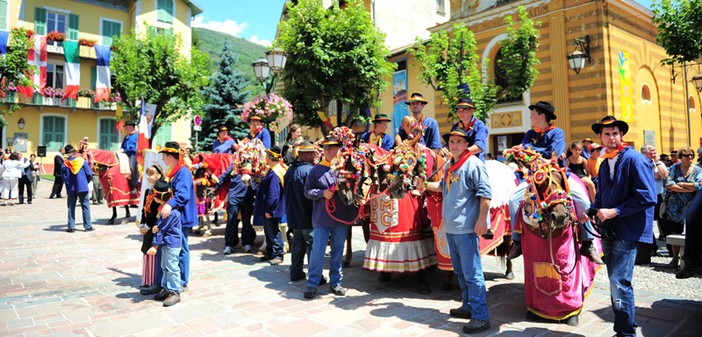The mule trail of the Roya, in the Middle Ages, was a vital axis between Piedmont and the County of Nice, the only access to the sea for the Lords of Savoy.
Salt, the white gold of the time, arrived by this route, coming from Provence: Hyères and Camargue, it was unloaded at the port of Nice and from there, on muleback, it traveled up the valleys of Paillon, Bévéra with a stop in Sospel, then came the Roya and Tende, the final stages for the Nice mules. There they were swapped for those from the city of Lascaris, Tende, known for being stronger, who would complete the journey to Piedmont, Cuneo, and Turin.
The population of Tende, almost every family had at least one mule, sometimes several. This activity was the wealth of these villagers. Nevertheless, it remained dangerous with the uncertainties of the road and highway bandits. Thus, the brotherhood of the muleteers of Tende was created to assist families struck by accident or assault.
This brotherhood obviously placed itself under the protection of Saint Eloi. The date of its founding is unknown, but it can be placed in the 15th century, an act of September 4, 1491, mentions the muleteers of Tende. To give an idea of the importance of this activity, a document from 1777 records more than 46,000 mules departing from Nice.
It is with both pride and respect for their ancestors that the people of Tende celebrate their mules every second Sunday of July. For the occasion, the animals are dressed in their finest attire, a thanksgiving mass is celebrated at the collegiate church, and then the pack animals parade, symbolically ascending towards the Col de Tende. The richly colorful and variegated procession stops in front of the town hall, and the new prior receives the brotherhood’s flag from his predecessor.
Saint Eloi, as every year, gathers a very large audience, and musical groups from the County and Piedmont animate throughout these two days the various events honoring the muleteers and especially the mules, the true heroes of this July weekend.
The mules take on colors, with their attire, their flower necklaces, and their steps becoming, as if by the magic of the moment, majestic. They are the masters of the house, heirs succeeding the Lascaris, whose castle remains only as a misshapen finger reaching towards the ethereal spaces of an azure sky.
This year the festival was enriched by two concerts, two groups, the Polish, who enlivened the mass at the collegiate church, and the Corsican, whose tradition is strongly marked by this animal, sturdier than a donkey and slower than a horse.
Thierry Jan


